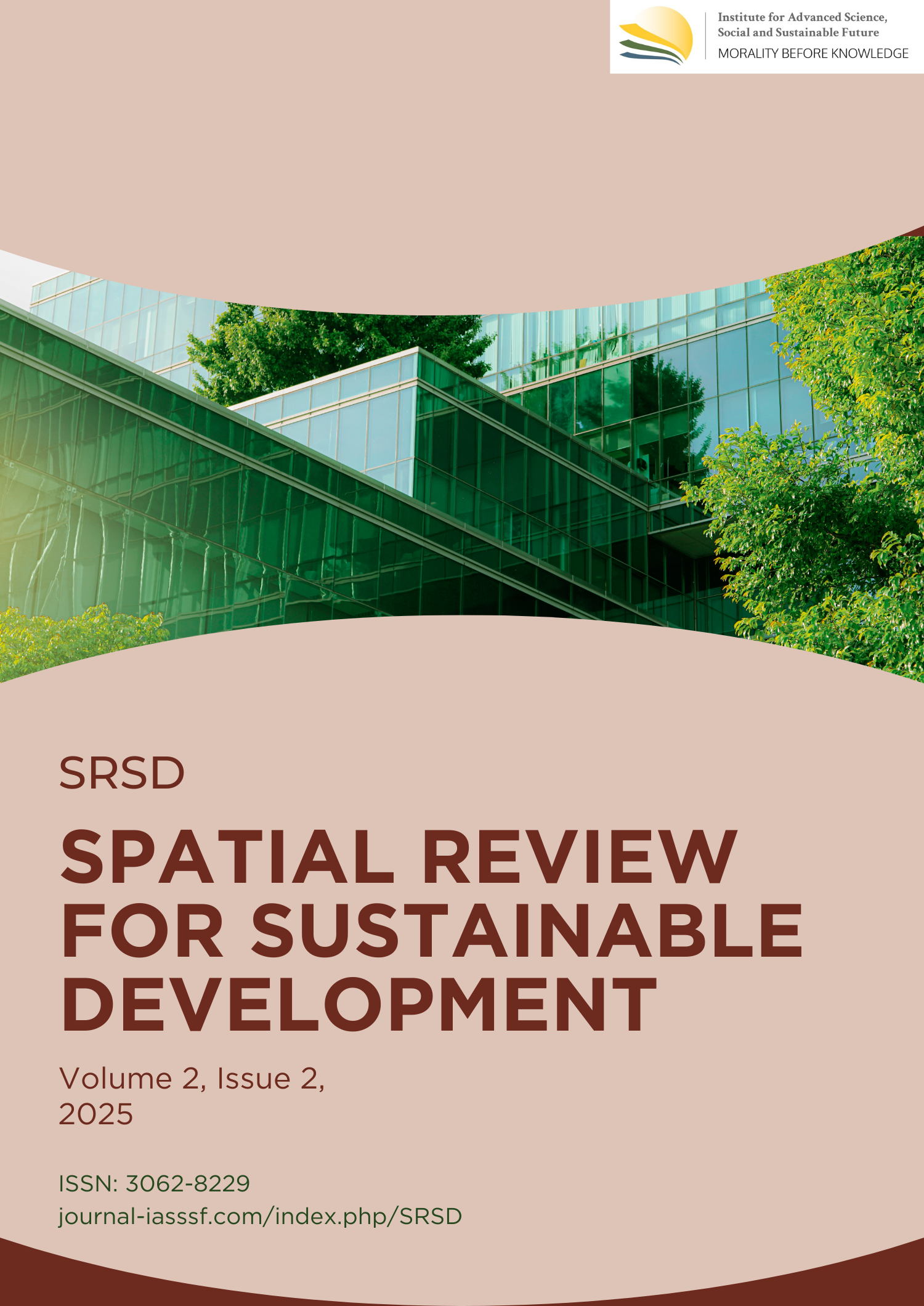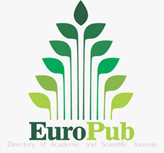Spatial multi-parameter analysis of landslide susceptibility with geological structure integration
DOI:
https://doi.org/10.61511/srsd.v2i2.2025.2013Keywords:
landslide, GIS, overlay, scoring, watershedAbstract
Background: Based on the 2022-2026 disaster risk assessment, nearly all districts in Bali Province are at a high risk of landslides. The Tukad Oos Watershed is one of the river basins in Bali Province, spanning two districts: Gianyar District and Bangli District. Mapping and analysing landslide potential is an important step in disaster mitigation efforts. The objective of this study is to identify the locations of landslide-prone areas in the Tukad Oos Watershed and to assess the impact of the development of the Ubud and Kintamani tourist areas on these landslide-prone areas. Methods: The method used is multi-parameter scoring. This study analyzes landslide potential in Tukad Oos Watershed, Bali, using rainfall, slope, geology, soil, landform, and land use parameters with a weighted scoring method. Findings: The results of the landslide potential estimation analysis indicate a high landslide potential class covering 4.87 hectares or 0.03% of the basin area, a moderate potential class covering 72.97 hectares or 0.5% of the watershed area, a low potential class covering 829.98 hectares or 6.74% of the watershed area, and a non-potential class covering 11,406.05 hectares or 92.62% of the upstream Tukad Oos watershed area. Conclusion: The results of the landslide potential analysis from this study are quite similar to the Inarisk BNPB data, with the difference lying in the level of detail produced, which is influenced by the spatial resolution of the Digital Elevation Model (DEM) used for the analysis. The development of tourism activities in the Ubud and Kintamani areas does not significantly increase the landslide potential in the Tukad Oos watershed. Novelty/Originality of this article: Studies on landslides in Indonesia use several parameters; the main parameter that is often used is slope inclination, but this study adds geological structure parameters as a determining factor in landslide estimation.
References
Agboola, B., Beni, L. H., Elbayoumi, T., & Thompson, G. (2024). Optimizing landslide susceptibility mapping using machine learning and geospatial techniques. Ecological Informatics, 81, 102583. https://doi.org/10.1016/j.ecoinf.2024.102583
Aldiansyah, S., & Saputra, R. A. (2023). Comparison of machine learning algorithms for land use and land cover analysis using Google Earth Engine: Case study of Wanggu watershed. International Journal of Remote Sensing and Earth Sciences (IJReSES), 19(2), 197–210. https://doi.org/10.30536/j.ijreses.2022.v19.a3803
Amalia, A. V., Fariz, T. R., Lutfiananda, F., Ihsan, H. M., Atunnisa, R., & Jabbar, A. (2024). Comparison of SWAT-based ecohydrological modeling in the Rawa Pening catchment area, Indonesia. Jurnal Pendidikan IPA Indonesia, 13(1), 1–11. https://doi.org/10.15294/jpii.v13i1.45277
Amin, M., Ridwan, Asmara, S., & Meilani, K. Y. (2023). Pemanfaatan citra Landsat 8 OLI dalam pemetaan daerah rawan longsor di Kecamatan Way Tenong, Kabupaten Lampung Barat. Jurnal Agricultural Biosystem Engineering, 2(2), 222–230. https://doi.org/10.23960/jabe.v2i2.7467
Arcana, I. K. F., Paturusi, S. A., & Suarna, I. W. (2021). Analisis daya dukung dan daya tampung lahan permukiman Kota Denpasar. Ecostrophic, 15(2), 247–257. https://doi.org/10.24843/EJES.2021.v15.i02.p09
Arimbawa, I. W. J. (2025). Planning the development of special interest tourism in the Geopark area of Mount Batur, Kintamani, Bangli Regency. Jurnal DIALEKTIKA: Jurnal Ilmu Sosial, 23(1), 227–237. https://jurnaldialektika.com
Arsyad, S. (2012). Konservasi tanah dan air. Institut Pertanian Bogor Press.
Badwi, N., & Baharuddin, I. I. (2023). Tingkat rawan longsor di Daerah Aliran Sungai Jenelata, Sub DAS Jeneberang, Kabupaten Gowa. Lageografia, 21(3), 305–320. https://doi.org/10.35580/lageografia.v21i3.53968
Bai, Z., Liu, Q., & Liu, Y. (2021). Landslide susceptibility mapping using GIS-based machine learning algorithms for the Northeast Chongqing area, China. Arabian Journal of Geosciences, 14(24), 2831. https://doi.org/10.1007/s12517-021-08871-w
BNPB. (2021). Dokumen kajian risiko bencana nasional Provinsi Bali 2022–2026. Direktorat Pemetaan dan Evaluasi Risiko Bencana, Badan Nasional Penanggulangan Bencana.
Bucała-Hrabia, A., Kijowska-Strugała, M., Śleszyński, P., Rączkowska, Z., Izdebski, W., & Malinowski, Z. (2022). Evaluating the use of the landslide database in spatial planning in mountain communes (the Polish Carpathians). Land Use Policy, 112, 105842. https://doi.org/10.1016/J.LANDUSEPOL.2021.105842
Cook, R. U., & Doornkamp, J. C. (1994). Geomorphology in environmental management – and new introduction. Elsevier.
Damanik, M. R. S., & Restu, R. (2012). Pemetaan tingkat risiko banjir dan longsor Sumatera Utara berbasis sistem informasi geografis. Jurnal Geografi, 4(1), 29–42. https://doi.org/10.24114/jg.v4i1.7926
Dwiastuti, W. A., Wiyanti, & Diara, I. W. (2021). Aplikasi sistem informasi geografis dan penginderaan jauh untuk kajian potensi dan kerawanan longsor di Daerah Aliran Sungai Tukad Buleleng, Kabupaten Buleleng. Jurnal Agroteknologi Tropika, 10(3), 264–274. https://jurnal.fp.unila.ac.id/index.php/JAT/article/view/264
Fariz, T. R., Jatmiko, R. H., & Mei, E. T. W. (2023). Pemanfaatan foto udara UAV untuk pemetaan kerentanan fisik rumah terhadap longsor di Sub-DAS Bompon. Jurnal Ilmu Lingkungan, 21(4), 819–829. https://doi.org/10.14710/jil.21.4.819-829
Fariz, T. R., & Nurhidayati, E. (2020). Mapping land coverage in the Kapuas watershed using machine learning in Google Earth Engine. Journal of Applied Geospatial Information, 4(2). https://doi.org/10.30871/jagi.v4i2.2256
Fariz, T. R., Suhardono, S., & Fadhilla, S. (2024). Rapid mapping of land cover changes in tropical watershed in Indonesia using Google Earth Engine. IOP Conference Series: Earth and Environmental Science, 1414(1), 012077. https://doi.org/10.1088/1755-1315/1414/1/012077
Feronika, Osawa, T., & Merit, I. N. (2023). Spatial analysis of landslide potential on agriculture in the Ayung Watershed, Bali Province. Ecostrophic, 17(2), 233–243. https://doi.org/10.24843/ejes.2023.v17.i02.p06
Hadmoko, D. S., Lavigne, F., Sartohadi, J., Hadi, P., & Winaryo. (2010). Landslide hazard and risk assessment and their application in risk management and landuse planning in eastern flank of Menoreh Mountains, Yogyakarta Province, Indonesia. Natural Hazards, 54(3), 623–642. https://doi.org/10.1007/s11069-009-9490-0
Hamida, F. N., & Widyasamratri, H. (2019). Risiko kawasan longsor dalam upaya mitigasi bencana menggunakan sistem informasi geografis. Pondasi, 24(1), 67–89. https://doi.org/10.30659/pondasi.v24i1.4997
Handari, S. (2016). Studi perencanaan jaringan air baku dan harga air pada DAS Tukad Oos di Kawasan Gianyar Provinsi Bali. Doctoral dissertation, Universitas Brawijaya.
Harini, N. (2021). Cultural landscapes and geodiversity of the Mount Batur Geopark, Bali. Geoheritage, 13(2), 1–13. https://doi.org/10.1007/s12371-020-00426-0
Hungr, O., Leroueil, S., & Picarelli, L. (2014). The Varnes classification of landslide types, an update. Landslides, 11(2), 167–194. https://doi.org/10.1007/s10346-013-0436-y
Indarto. (2010). Hidrologi dasar teori dan contoh aplikasi model hidrologi. Bumi Aksara.
Iskandarsyah, Wusqa, U., & Hadikusumo, S. A. (2022). Analisa potensial longsor menggunakan investigasi metode di Sumedang Indonesia. Jurnal Geosains Terapan, 5(1), 12–18. https://geosainsterapan.id/index.php/id/article/view/81
Isnaini, R. (2019). Analisa bencana tanah longsor di wilayah Jawa Tengah. Islamic Management and Empowerment Journal, 1(2), 143–160. https://doi.org/10.18326/imej.v1i2.143-160
Krisnandi, R., Trianda, O., Rizqi, A., Febby, L., & Hanafi, M. (2021). Identifikasi kawasan rawan bencana longsor metode skoring daerah Mojotengah dan sekitarnya, Kec. Reban, Kab. Batang, Provinsi Jawa Tengah. ReTII, 2021(November), 501–508. https://journal.unesa.ac.id/index.php/jg/article/view/31773/11622/107986
Lanto, M. S., Syam, D. N., Wahyuni, A., & Kusmiran, A. (2022). Pemetaan risiko bencana tanah longsor di Kabupaten Barru menggunakan metode pembobotan parameter dan Inarisk BNPB. Jurnal Geosaintek, 8(3), 250–259. http://dx.doi.org/10.12962/j25023659.v8i3.14758
Latue, P. C., Sihasale, D. A., & Rakuasa, H. (2023). Pemetaan daerah potensi longsor di Kecamatan Leihitu Barat, Kabupaten Maluku Tengah, menggunakan metode slope morphology (SMORPH). Insologi: Jurnal Sains dan Teknologi, 2(3), 486–495. https://doi.org/10.55123/insologi.v2i3.1912
Latue, T., Latue, P., Rakuasa, H., Somae, G., & Muin, A. (2023). Mapping landslide prone areas in Huamual Sub-District, Seram Bagian Barat Regency, Indonesia. Jurnal Riset Multidisiplin dan Inovasi Teknologi, 1(2), 84–93. https://doi.org/10.59653/jimat.v1i02.239
Muin, A., & Rakuasa, H. (2023). Spatial analysis of landslide potential using modification of the Storie Index method in the Wae Batu Gajah Watershed, Ambon City, Indonesia. International Journal of Scientific Multidisciplinary Research, 1(3), 107–116. https://doi.org/10.55927/ijsmr.v1i3.3625
Pakniany, Y., Latue, P. C., & Rakuasa, H. (2023). Pemetaan daerah rawan longsor di Kecamatan Damer, Kabupaten Maluku Barat Daya, Provinsi Maluku. Jurnal Altifani Penelitian dan Pengabdian kepada Masyarakat, 3(2), 235–242. https://doi.org/10.59395/altifani.v3i2.367
PSBA UGM. (2001). Penyusunan sistem informasi penanggulangan bencana alam tanah longsor di Kabupaten Kulon Progo: Laporan akhir. Pemerintah Kabupaten Kulon Progo, Perencanaan Pembangunan Daerah.
Rafidah, Z., Arifin, S. M., Zahrany, F., & Syahbananto, G. (2024). Carrying capacity of protection function of Tuntang Watershed. Indonesian Journal of Earth and Human, 1(2), 76–83. https://doi.org/10.15294/ijeh.v1i2.12290
Rahmad, R., Suib, & Nurman, A. (2018). Aplikasi SIG untuk pemetaan tingkat ancaman longsor di Kecamatan Sibolangit, Kabupaten Deli Serdang, Sumatera Utara. Majalah Geografi Indonesia, 32(1), 1–13. https://doi.org/10.22146/mgi.31882
Rahmania, T., Apriyanto, B., & Astutik, S. (2019). Potensi terjadinya longsor pada kawasan karst Gunung Sadeng Puger karena adanya aktivitas pertambangan. Majalah Pembelajaran Geografi, 2(1), 161–171. https://mpg.jurnal.unej.ac.id/index.php/PGEO/article/view/11937
Rakuasa, H., Budnikov, V. V., & Adifan, M. R. (2024). Utilization of digital elevation models in slope morphology analysis for landslide identification in Ternate City, Indonesia. Applied Engineering, Innovation, and Technology, 1(2), 95–103. https://doi.org/10.62777/aeit.v1i2.40
Rakuasa, H., Sihasale, D. A., Latue, P. C., Pakniany, Y., & Septory, J. S. I. (2023). Spatial analysis of landslide-prone areas in Damer District, Maluku Barat Daya Regency, Maluku Province. Social Science Studies, 3(3), 182–194. https://doi.org/10.47153/sss33.5812023
Ramdani, D., Kresnawati, D. K., & Apriyanti, D. (2020). Analisis dan pembuatan peta daerah potensi longsor di Kabupaten Bogor tahun 2019 menggunakan metode pembobotan pada sistem informasi geografis. Jurnal Teknik, 21(2), 1–12. https://doi.org/10.33751/teknik.v21i2.3277
Santoso, I. A. P., Wibowo, A. L. P., Zulfa, C. L., Siregar, N. N., & Sadisman, R. A. (2022). Classification of Majene Regency landslide prone areas using geographic information system and Storie Index. Jurnal Geocelebes, 6(1), 72–86. https://doi.org/10.20956/geocelebes.v6i1.19040
Shahabi, H., Ahmadi, R., Alizadeh, M., Hashim, M., Al-Ansari, N., Shirzadi, A., Wolf, I. D., & Ariffin, E. H. (2023). Landslide susceptibility mapping in a mountainous area using machine learning algorithms. Remote Sensing, 15, 3112. https://doi.org/10.3390/rs15123112
Somae, G., Supriatna, S., Manessa, M. D. M., & Rakuasa, H. (2022). SMORPH application for analysis of landslide prone areas in Sirimau District, Ambon City. Social, Humanities, and Educational Studies (SHES), 5(4), 11. https://doi.org/10.20961/shes.v5i4.68936
Stanghellini, P. S. L. (2010). Stakeholder involvement in water management: The role of the stakeholder analysis within participatory processes. Water Policy, 12(5), 675–694. https://doi.org/10.2166/wp.2010.004
Suryati, I., Juliarthana, I. N. H., Galih, K. A. S., & Pucangan, I. P. W. W. (2023). Kajian topografi dan hidrologi sempadan Sungai Tukad Oos Kabupaten Bangli-Gianyar. Reka Ruang, 6(1), 36–49. https://doi.org/10.33579/rkr.v6i1.3137
Van Bemmelen, R. W. (1949). The geology of Indonesia (Vol. 1A). Government Printing Office.
Wang, F., Xu, P., Wang, C., Wang, N., & Jiang, N. (2017). Application of a GIS-based slope unit method for landslide susceptibility mapping along the Longzi River, Southeastern Tibetan Plateau, China. ISPRS International Journal of Geo-Information, 6(6), 172. https://doi.org/10.3390/ijgi6060172
Waridin, I., Prastyadewi, M. I., Suciati, I., & Al-Hafidz, Z. (2023). Utilization of the Ayung watershed (DAS) as a sustainable tourism attraction in Gianyar Regency. Jurnal Ekonomi dan Studi Pembangunan, 15, 1. https://doi.org/10.17977/um002v15i12023p143
Waridin, W., & Astawa, I. G. (2021). Shifting of land use in sustainable tourism: A local cultural approach in Indonesia. GeoJournal of Tourism and Geosites, 35(2), 270–274. https://doi.org/10.30892/gtg.35201-647
Downloads
Published
Issue
Section
Citation Check
License
Copyright (c) 2025 Akbar Cahyadhi Pratama Putra, Desak Nyoman Deasi Triani, Ni Putu Nanda Surya Dewi Tilija, Putu Venita Wirastuti, Tantri Utami Widhaningtyas

This work is licensed under a Creative Commons Attribution 4.0 International License.














